Ictineo I, the First Ever Submarine
In the courtyard of the Maritime Museum of Barcelona is a unique exhibit-a copy of the submarine Ictineo I, built by the Catalan engineer and inventor, writer and artist Narcís Monturiol i Estarriol. Monturiol received a law degree, and was engaged in journalism on social topics, eventually became seriously interested in science and technology. While living in Cadax, narsis knew firsthand about the dangerous work of coral divers, and after witnessing the death of a diver, he thought about creating a device that would make it possible to protect the work of swimmers. The idea did not leave him for 12 years, until friends convinced him to try to implement his plan. In 1857, a diving society was founded in Barcelona, and soon the project "El Ictineo O Barco-Pez", (Ictineo or fish-ship).
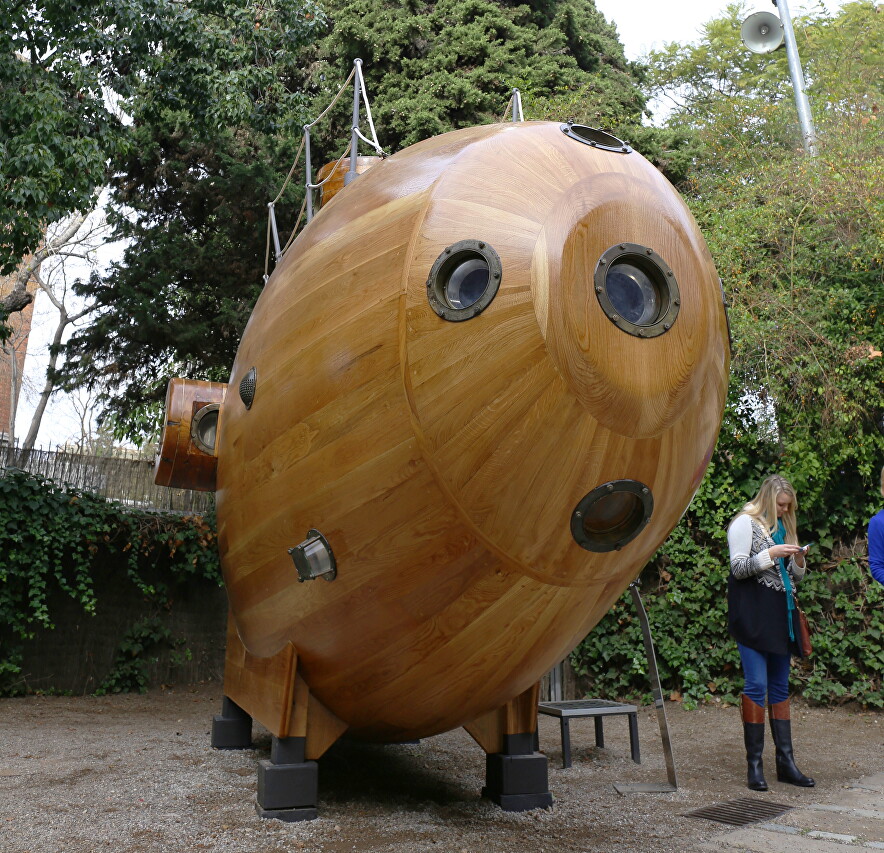
In the courtyard of the Maritime Museum of Barcelona is a unique exhibit-a copy of the submarine Ictineo I, built by the Catalan engineer and inventor, writer and artist Narcís Monturiol i Estarriol. Monturiol received a law degree, and was engaged in journalism on social topics, eventually became seriously interested in science and technology. While living in Cadaqués, narsis knew firsthand about the dangerous work of coral divers, and after witnessing the death of a diver, he thought about creating a device that would make it possible to protect the work of swimmers. The idea did not leave him for 12 years, until friends convinced him to try to implement his plan. In 1857, a diving society was founded in Barcelona, and soon the project "El Ictineo O Barco-Pez", (Ictineo or fish-ship).
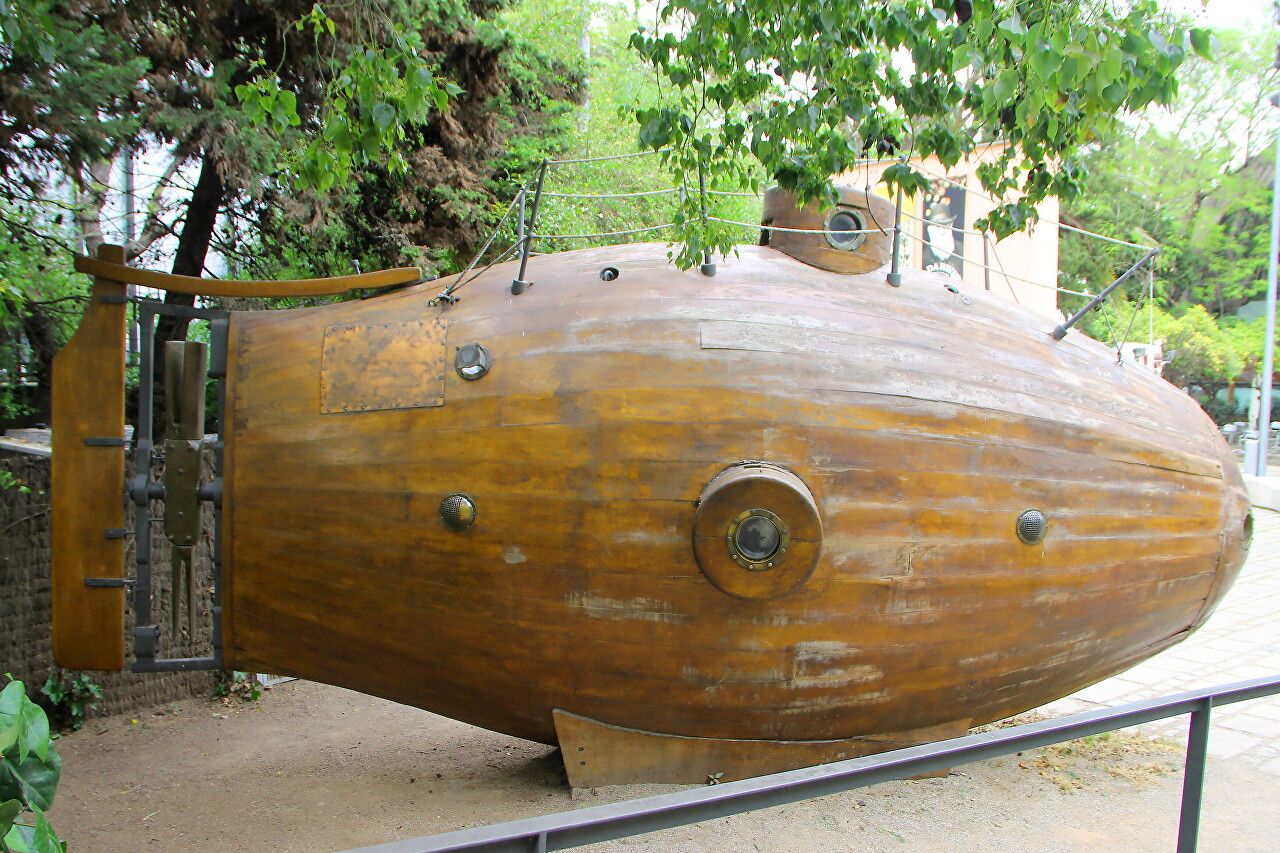
Structurally, the device was a sealed ellipsoid that could withstand water pressure and an external streamlined shell. For financial reasons, the main building material was wood-the internal "strong body" was made of oak rings, sheathed with olive wood boards and covered with 2 mm copper sheets on the outside. The diameter of the habitable compartment was 2 meters with a length of 4 meters. According to the inventor's calculations, the hull was able to withstand water pressure at a depth of up to 500 meters, but Monturiol did not look so far, and for safety reasons limited the diving depth to 50 meters. The outer shell had a length of 7 meters and a height of 2.5 meters, and 4 ballast tanks were installed inside it. Safety was provided by ballast, which was discharged when it was impossible to blow air "swimming bubbles" - without ballast, the boat received positive buoyancy. A load was installed inside the "strong case", which could be moved along the guides, changing the center of gravity of the device.
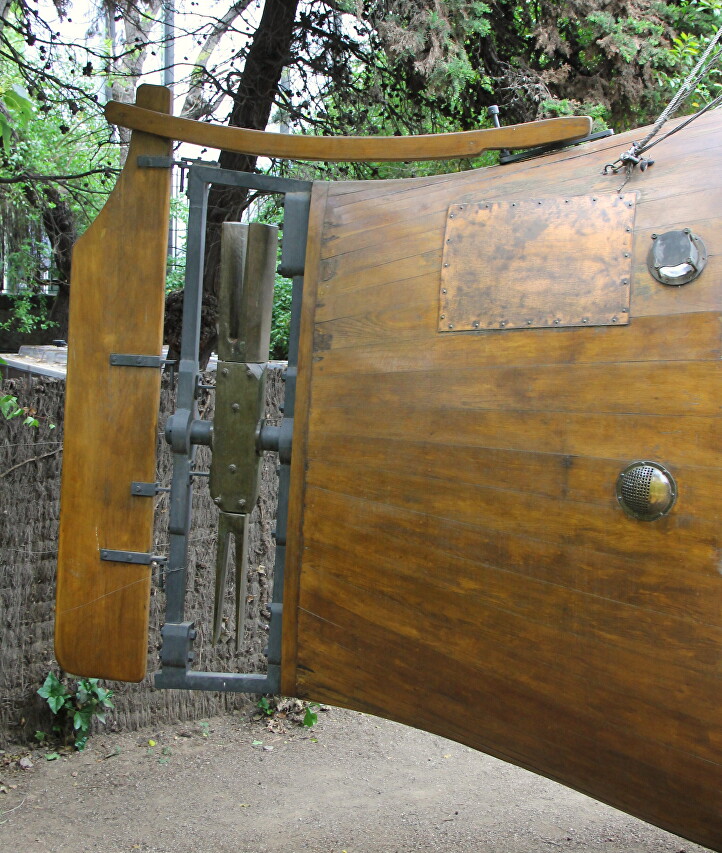
The first dive took place in the port of Barcelona on June 28 and almost ended in disaster: the device came across the remains of piles on the bottom and damaged the outer shell. The inventor had no funds left for a full-fledged repair, so the submarine was restored with a limited diving depth of up to 20 meters. During the summer, Monturiol completed more than 20 dives, gradually increasing the depth and time spent under water. As a result, a depth of 20 meters was reached, at which the inventor and his partner spent more than two hours using only air inside the case. At the same time Monturiol suggested using compressed air and chemical carbon dioxide absorbers to increase the time of scuba diving.
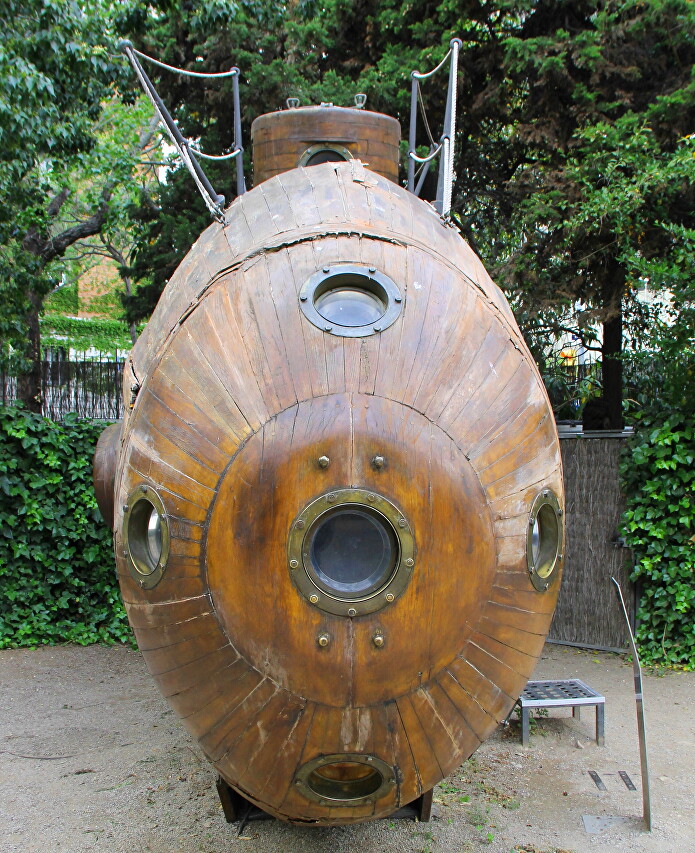
The underwater boat showed good handling, but the speed was limited only by the muscular strength of the crew. In total, the submarine made more than fifty successful dives until a cargo ship crashed into it in the Parking lot. The inventor did not restore the device, but started building a more advanced model Ictineu II with a mechanical (steam) drive. Unfortunately, the project again did not find the support of the authorities, was partially implemented on donations, and eventually led to the bankruptcy of the company.
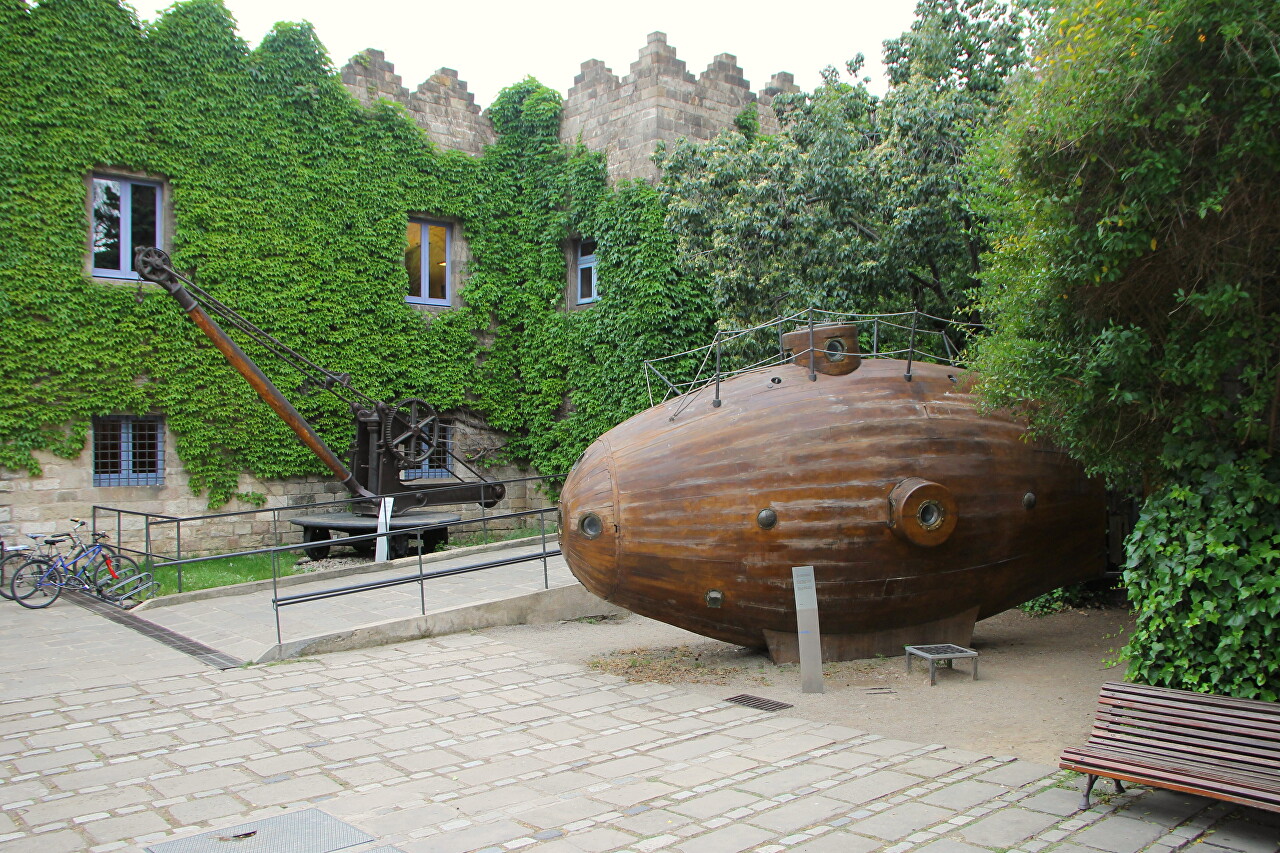
In any case, Monturiol laid down and tested the basic principles of building submarines: a structure consisting, in modern terminology, of a strong and light hull, ballast tanks, and controls. They were offered methods of supplying the crew with air, which are still used today, and his creations became the world's first real floating submarines.